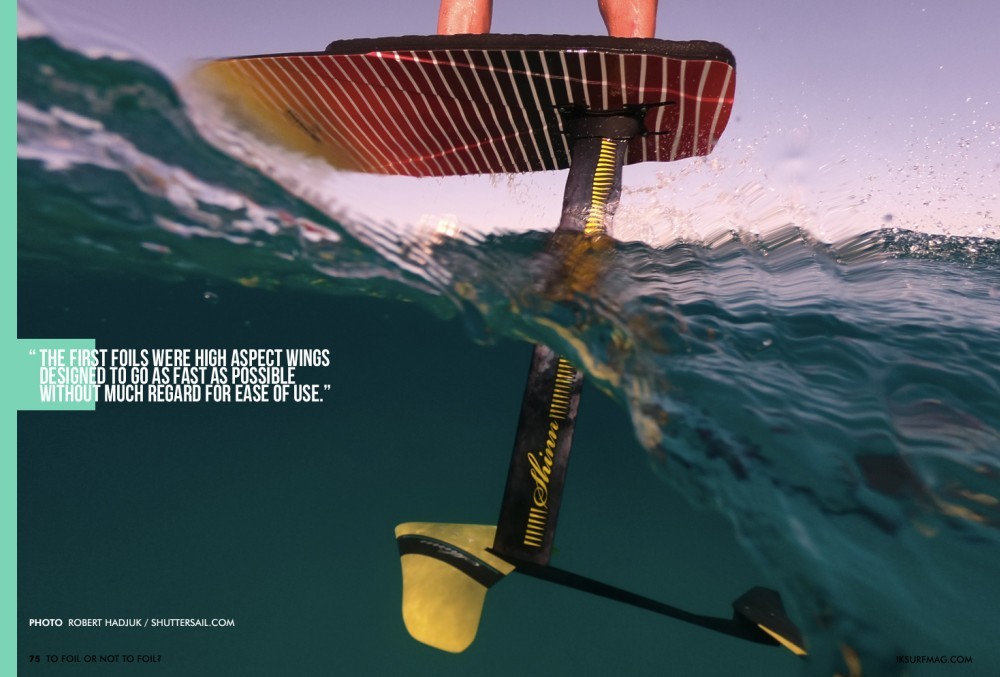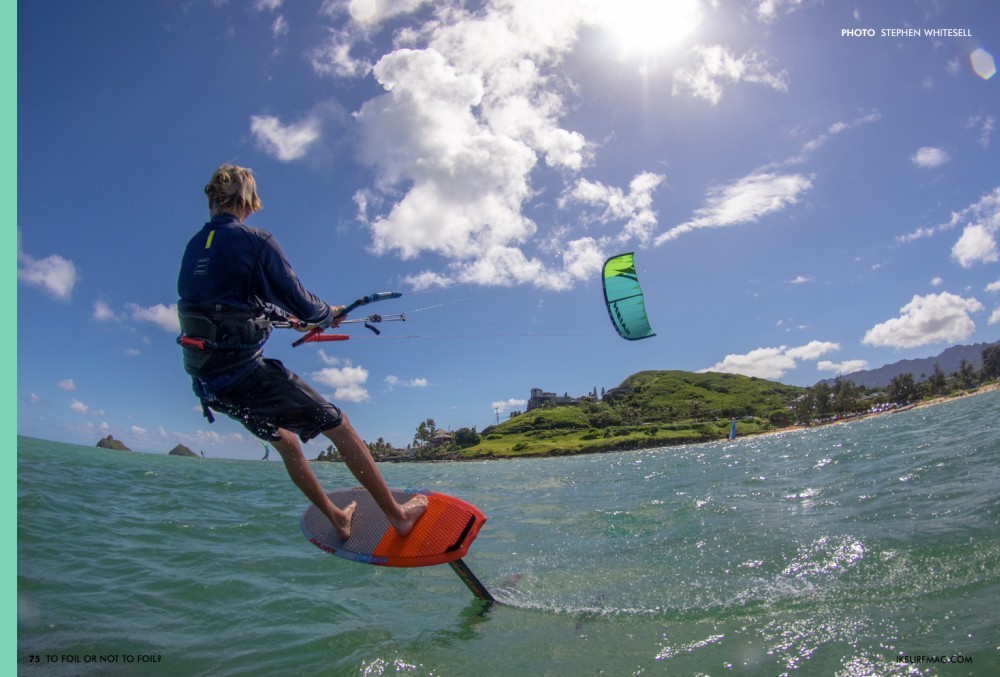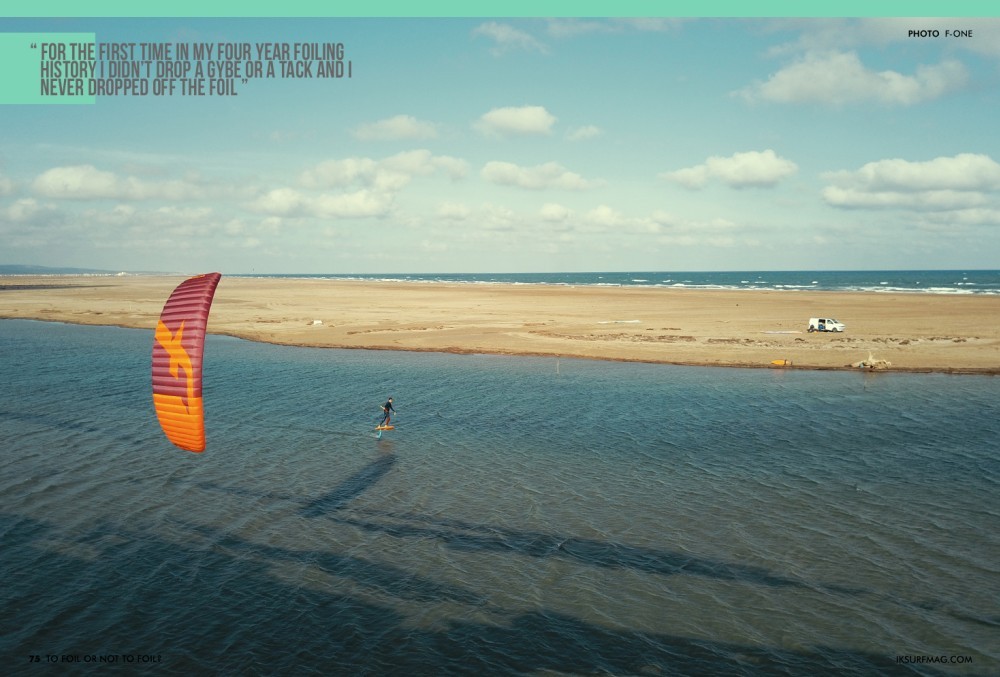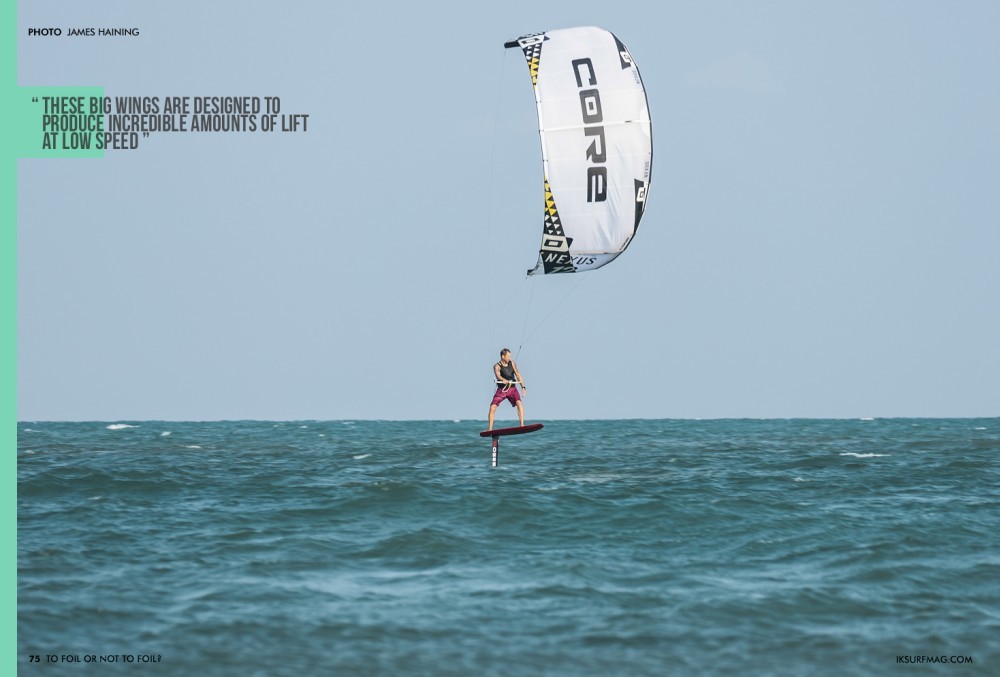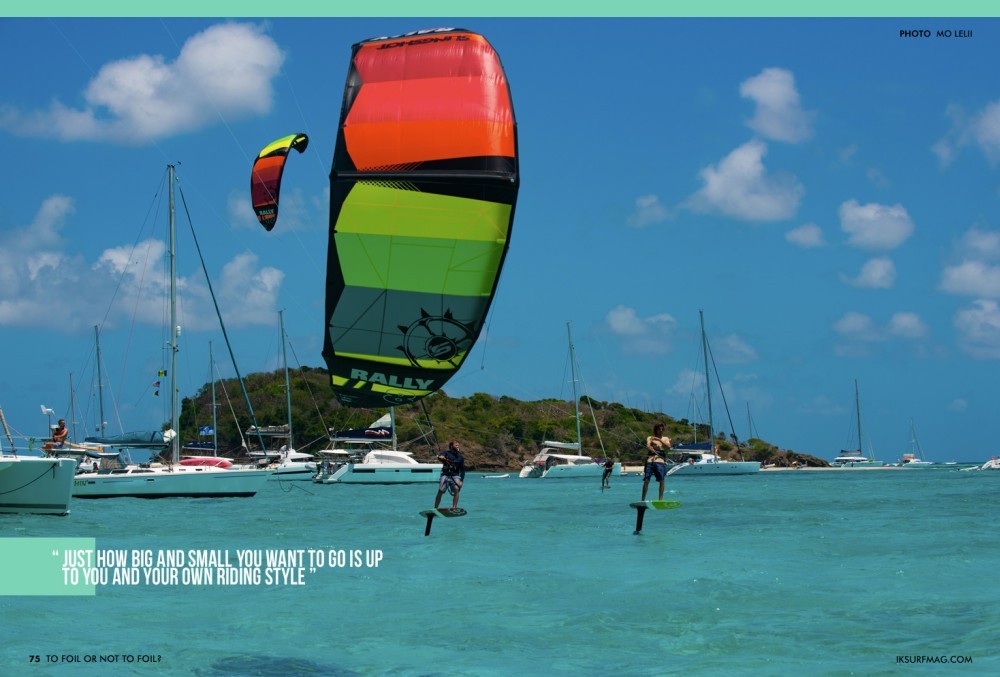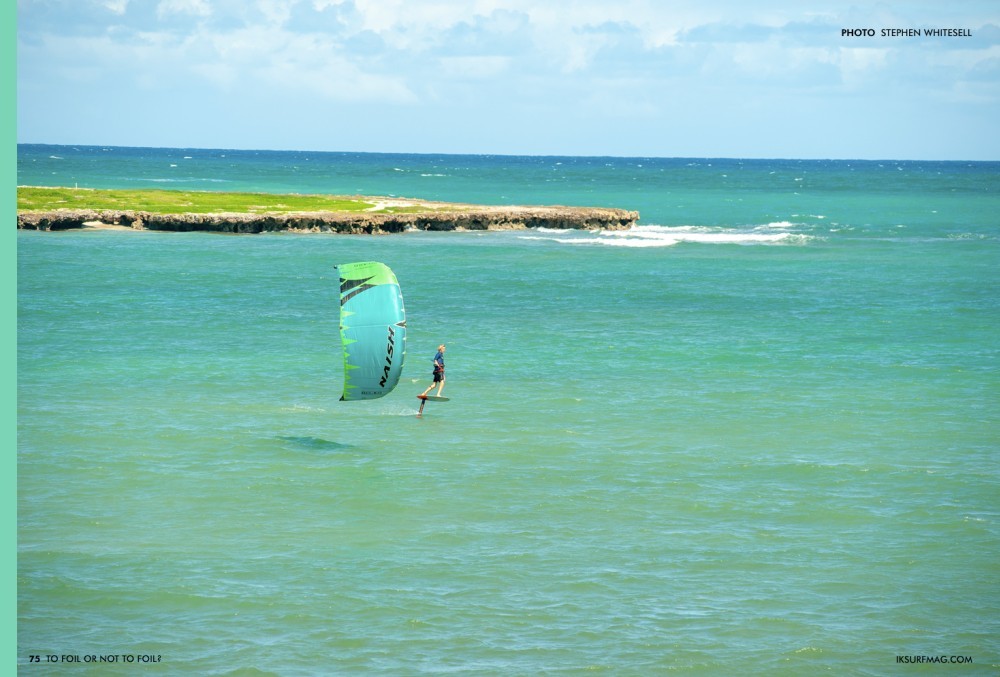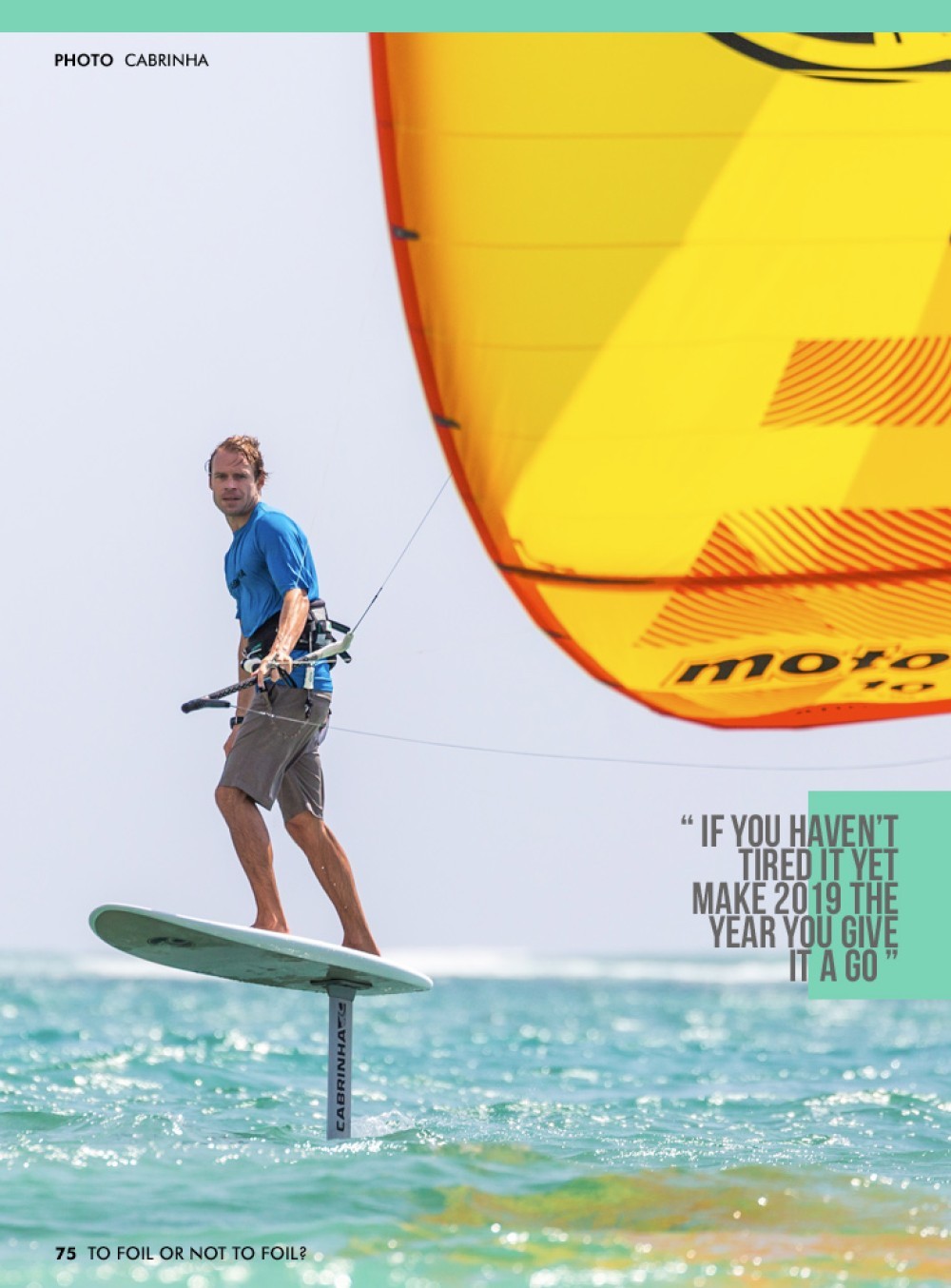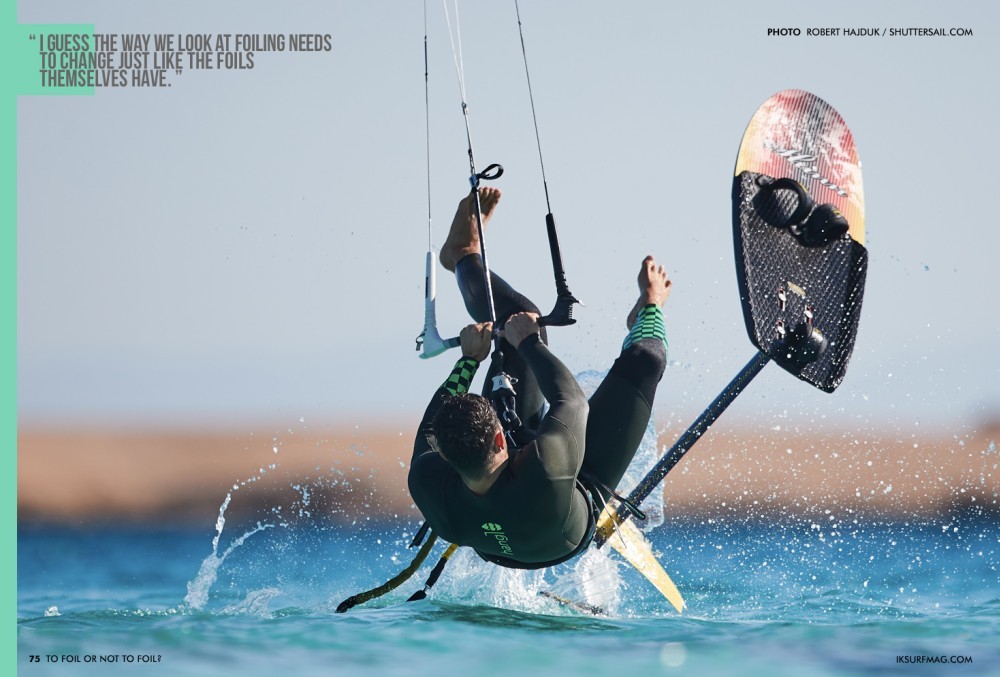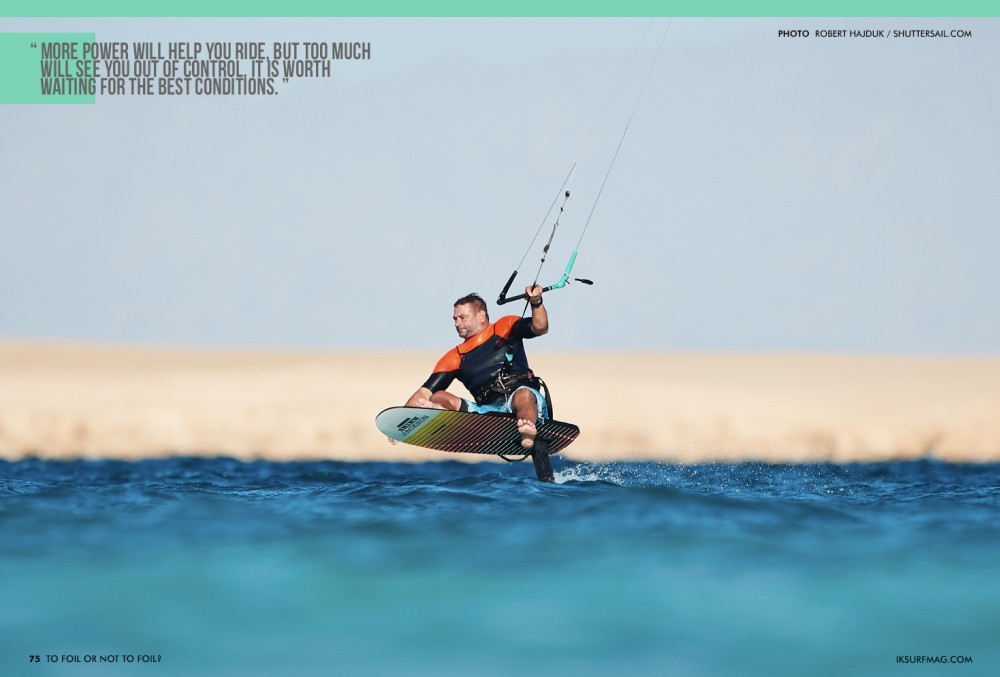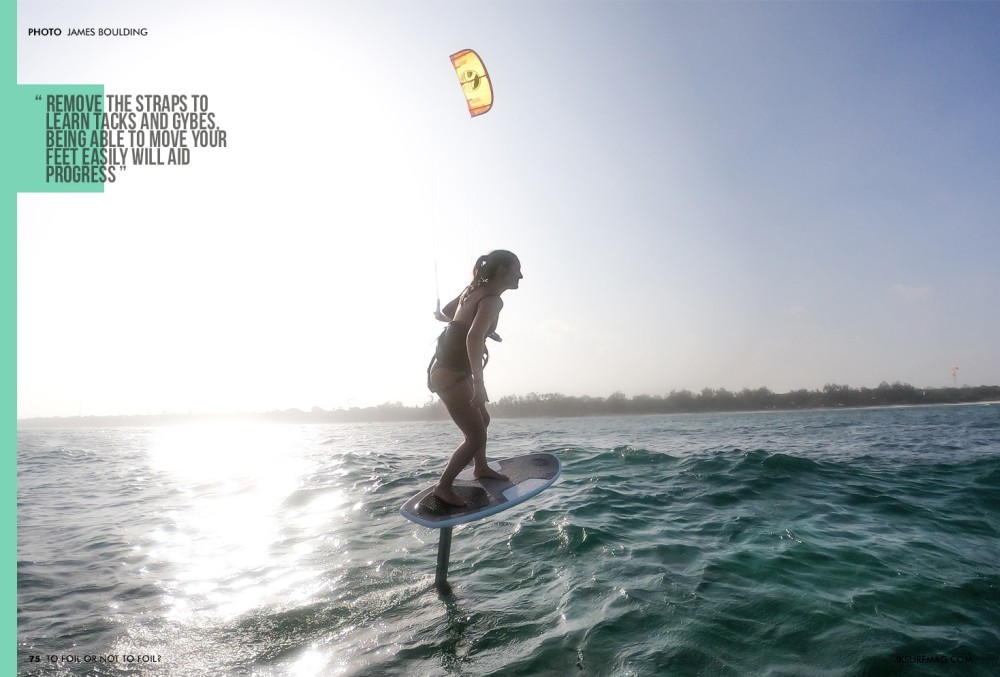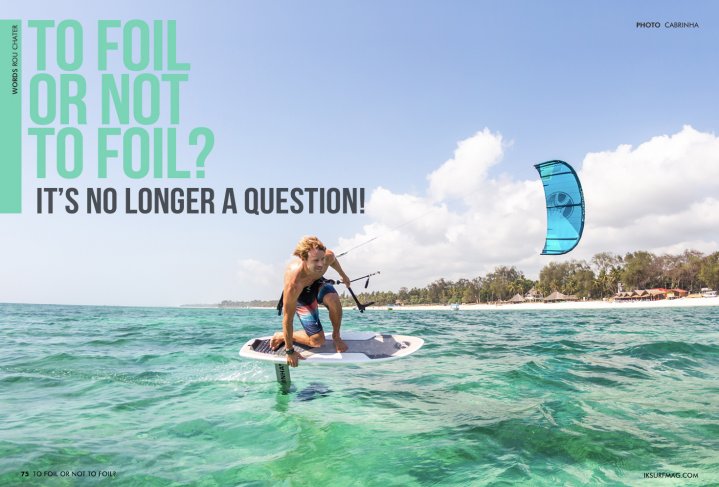
To Foil Or Not To Foil
Issue 75 / Wed 12th Jun, 2019
It's no longer a question, with the explosion of surf foiling kiting has come so far, twitchy hard to use race wings are a thing of the past, unless you have Olympic dreams and a whole world of fun, easy to use equipment is waiting for you! Click here to see out top ten tips for beginners learning to foil!
It’s no longer a question!
Rou Chater looks at how kite foiling has developed at an alarming rate in recent years and thanks to the influence of surf foiling how the wings we ride have changed too. Kite foiling has never been easier to learn, it’s a weapon everyone should have in their kiting arsenal!
Kite foiling is perhaps the most exciting and fastest developing area of our sport, however, it didn’t start in a traditional manner, and usually these sports start out slow and then go fast. Foils for kites were the opposite; driven by the race scene in France the first foils were high aspect wings designed to go as fast as possible without much regard for ease of use.
Liquid Force arguably changed the game with the Foil Fish in 2015, a cheaper set up aimed at making progression easy, yet if we look at the specs of the wing and the mast, and how hard it was to learn, we’re still a way off user friendliness. Slingshot then took a different approach with the short mast system, which made learning to foil suddenly a very achievable goal for any kiter with some reasonable skills.
However the goal was still fast race or freeride wings for kiters. I recall a friend buying a foil to learn on a couple of years ago and he opted for the fastest most race spec set up he could find. Using the argument he didn’t want to “grow out of it”. Kite foiling was very much still going in the wrong direction.
Last year I was in Sardinia at a press launch and I had an epiphany. Sadly I broke my leg not long afterwards and my ideas were put on hold, but now I’m back on the water I’m preaching the good word. I rode a SUP wing in Sardinia, it was a massive behemoth of a thing, about an inch and a half thick, designed to lift a SUP board and rider off the water at a low speed take off point and allow them to fly.
There was about 6-7 knots of wind, barely enough to launch the 9m kite I had pumped up. I got told I’d need a 17m or bigger, but I knew better. A smaller kite is faster, lighter and easier to keep in the sky in really light winds. I was dubious as to whether the set up would work, but I jumped on, dived the kite and off I went.
I rode for about an hour, and for the first time in my four year foiling history I didn’t drop a gybe or a tack and I never dropped off the foil. I surprised even myself. It was an incredible feeling, the foil underneath me was so stupidly stable I could be dancing like an elephant as I waddled round the gybes and it didn’t flinch. I was dropping the board speed down to almost zero and the wing would not stall.
It kept on flying. It was almost like the foil had so much buoyancy it was keeping me up out of the water, but it was the incredible profile and shape working the magic.
Something I thought wouldn’t be much fun and wouldn’t be that fast suddenly was the best foiling session I had had in years. Here’s the crux of the issue, I love foiling, I love going fast, but I’m never going to race and I’m probably just going to fly my inflatable wave kites with my foil. Therefore, do I really need a small racey front wing; surely a bigger more forgiving wing is all I need to have fun on the water.
Arguably we have surf foiling to thank for all of this, for sure there were some bigger wave style wings around before, but surf foiling has pushed the development of wings to new levels. When I was at the F-One offices recently they showed me their huge 1800 wing, it wouldn’t look out of place on the rear end of a humpback. It is literally huge.
Bear in mind, two years ago I was leaning to SUP foil with the F-One crew in Mauritius on a 1200 wing which at the time was considered huge and there was a prototype 1400 wing kicking about that looked ridiculous. The basic premise is this, surf foiling is hard, but a bigger wing makes it easy. Naval Architect Charles Bertrand reckoned the 1800 wing makes it twice as easy as the 1600 wing.
It’s not just the size, it’s the shape, these big wings are designed to produce incredible amounts of lift at low speed, with a stable nature that can take the odd foot in the wrong place. Surf wings have doubled in size in a year, and I joked with Charles that maybe they will double again next year, he said anything was possible.
Of course, a larger wing is going to be less manoeuvrable and slower due to the drag coefficient, but when you are learning you don’t want speed and manoeuvrability, you just want stability. As the surf wings got bigger more and more riders had the same idea I was having over in Sardinia.
I’ve spoken to numerous people about this article and most of the people in the know are leaning towards bigger wings and smaller kites. A bigger more stable wing is easier to use, more fun to carve around and makes wave riding without overtaking the kite possible. By big I’m not talking massive surf wings if you have some skill, but a more sensible, low aspect and forgiving design that offers huge amounts if lift and a really low stall speed.
A smaller kite enables you to ride with less power, less pull and have a tool that is far more manoeuvrable. Just how big and small you want to go is up to you and your own riding style, many of you will want speed and decide to stay in the race and freeride area, but those of you who like to experiment might be thinking about trying something completely different, if you haven’t already.
This moves us on to another aspect of modern kite foiling; it’s all so interchangeable. When the first boards came out standards were far from the market. Tuttle boxes, deep tuttle boxes, twin US tracks, K boxes and numerous others were used to connect the board and the mast. Brands even had different standards within their ranges.
Now we seem to be in the rarefied position of at least a standard US track system for the main connection to the board. This means we can use a multitude of boards with different foils and this is something we will reflect in our future tests. Boards will be seen as interchangeable with different wings so we’ll test them separately. One brands board and another brands foil is now, for the most part, no problem.
The foils are all interchangeable too, you can put a different front wing on a set up to completely change your ride, although this is still brand specific. We could be entering a realm of having a handful of wings like we have a handful of kites. The development is really incredible when you think about it. Fancy doing some coastal cruising with your friends at speed? Chuck on the fast wing. Waves looking good? Go for the slower surf wing and shred a few!
Or perhaps, you want to keep it simple, there is absolutely no reason you can’t kite foil with your surf foil set up. One foil to rule them all as they say. I did just this in Tarifa recently riding the Naish Hover 5’2” surf foil board with the 65cm mast and the 1250 wing, which happens to be Kevin Langeree’s go to set up for surf foiling.
It was a fun set up to use, and worked really well with the kite, although the lack of rocker in the board made for some fun wipeouts! With so many options out there now from the brands the possibilities are endless. Just think, 5-6 years ago the only foils available were full on race machines that were almost impossible to learn on.
There has never been a better time to get into foiling, if you haven’t tired it yet make 2019 the year you give it a go, a short mast and massive wing will make your progress swift. If you are already into it and struggling to master those tacks and gybes, look at your front wing, how big is it? Could you go up a few sizes and make your sessions more enjoyable and successful?
If you’re a foiling expert then why not consider getting a big wing just to experience the feeling, it’s amazing how big you can go, the bigger the wing the smaller the kite, take a 5m for a spin in 15 knots with a SUP wing and be surprised.
I guess the way we look at foiling needs to change just like the foils themselves have. Foiling should be fun, it doesn’t have to be hard and riding the smallest wing possible isn’t necessarily the endgame here.
Having a massive grin on your face is…
Here are my 10 updated top tips for beginners…
- Wear a helmet and buoyancy aid/impact vest, you will crash and you will be grateful you are wearing the extra protection.
- Start in a reasonable amount of wind, 15-20mph, but use an underpowered kite at first, yes you can ride in really light winds, but this is an advanced technique and takes skill, when learning you need enough wind so you don’t have to steer the kite up and down and you can concentrate on flying the foil.
- Learn to body drag and manoeuvre the board into various positions while you are in the water first.
- When you crash, try and keep your arms close to your body, instinct makes you put a hand out, if you are riding a full size mast the leverage and forces in the crash will make them hurt.
- As you get more confident go out a little more powered. More power will help you ride, but too much will see you out of control, it is worth waiting for the best conditions. Sheet in and out to adjust the riding height of the foil, this really helps with your first few attempts! As you progress you’ll find you can handle bigger winds and lighter winds too riding an overpowered foil takes as much skill as getting one going when there isn’t enough wind.
- Learn to ride across the wind first, these things blast upwind with ease, so getting across the wind cracked will make it easier when you come to ride downwind.
- Riding downwind you need the perfect amount of power in the kite, if you are over-powered the foil will keep rising up out of the water and chucking you off. Depower the kite and this should calm down…
- Be patient, it takes time to get this cracked, but with the right equipment, like a great set up (short mast and big front wing) you will progress quickly. These days you can learn to foil in an afternoon rather than a week!
- Use a front strap at first; this will help you waterstart keep it loose though so your feet can come out.
- Once you have cracked riding remove the straps to learn tacks and gybes, being able to move your feet easily will aid progress, but you will need to hold the rail of the board and steer the kite with one hand during the water start which is tricky to learn, especially in light winds. A board with low volume and a foil that floats will make strapless waterstarts easier.
- HAVE FUN!
Videos
By Rou Chater
Rou has been kiting since the sports inception and has been working as an editor and tester for magazines since 2004. He started IKSURFMAG with his brother in 2006 and has tested hundreds of different kites and travelled all over the world to kitesurf. He's a walking encyclopedia of all things kite and is just as passionate about the sport today as he was when he first started!




